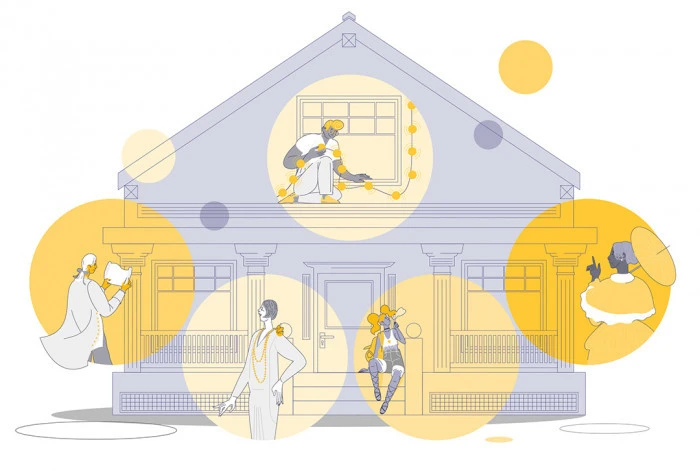Share what you know,
and discover more.
Share what you know,
and discover more.
Nov 15, 1979

-

- Charmaine Bantugan
National Register of Historic Places - All Souls Episcopal Church and Parish House
Statement of Significance: All Souls Church is a significant architectural landmark in Biltmore Village for its associations with the career of Richard Morris Hunt and as an outstanding example of the application of the Romanesque style to a small ecclesiastical structure. The Parish House is likewise an important architectural feature of the village, not only as a major reminder of Hunt's work there but also as an example of Hunt's application of a wide variety of design motifs and distinctive features which are found elsewhere in Biltmore Village and result in a visually pleasing structure. In addition, the buildings have an intimate association with the Vanderbilt family--George W. Vanderbilt was one of the organizers of the congregation in 1896, financed the construction of the church and parish house, and selected the furnishings. Mr. Vanderbilt also used the church as an administrative vehicle for some of the Vanderbilt philanthropies that he established there, most notably the Clarence Barker Memorial Hospital which was established as an adjunct of the church.
National Register of Historic Places - All Souls Episcopal Church and Parish House
Statement of Significance: All Souls Church is a significant architectural landmark in Biltmore Village for its associations with the career of Richard Morris Hunt and as an outstanding example of the application of the Romanesque style to a small ecclesiastical structure. The Parish House is likewise an important architectural feature of the village, not only as a major reminder of Hunt's work there but also as an example of Hunt's application of a wide variety of design motifs and distinctive features which are found elsewhere in Biltmore Village and result in a visually pleasing structure. In addition, the buildings have an intimate association with the Vanderbilt family--George W. Vanderbilt was one of the organizers of the congregation in 1896, financed the construction of the church and parish house, and selected the furnishings. Mr. Vanderbilt also used the church as an administrative vehicle for some of the Vanderbilt philanthropies that he established there, most notably the Clarence Barker Memorial Hospital which was established as an adjunct of the church.
Nov 15, 1979
National Register of Historic Places - All Souls Episcopal Church and Parish House
Statement of Significance:All Souls Church is a significant architectural landmark in Biltmore Village for its associations with the career of Richard Morris Hunt and as an outstanding example of the application of the Romanesque style to a small ecclesiastical structure. The Parish House is likewise an important architectural feature of the village, not only as a major reminder of Hunt's work there but also as an example of Hunt's application of a wide variety of design motifs and distinctive features which are found elsewhere in Biltmore Village and result in a visually pleasing structure. In addition, the buildings have an intimate association with the Vanderbilt family--George W. Vanderbilt was one of the organizers of the congregation in 1896, financed the construction of the church and parish house, and selected the furnishings. Mr. Vanderbilt also used the church as an administrative vehicle for some of the Vanderbilt philanthropies that he established there, most notably the Clarence Barker Memorial Hospital which was established as an adjunct of the church.
Posted Date
Aug 23, 2023
Historical Record Date
Nov 15, 1979
Source Name
National Register of Historic Places
Source Website
Delete Story
Are you sure you want to delete this story?
















